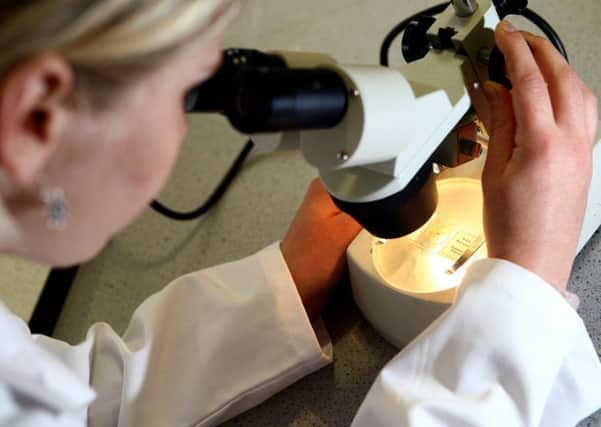More than 6,000 Hartlepool women miss potentially life-saving smear tests


The take-up rate for cervical screenings in Hartlepool has fallen for the second consecutive year, NHS figures show.
Only 72.2% of the 23,500 women who were due a smear test before the end of March attended an appointment.
Advertisement
Hide AdAdvertisement
Hide AdThis means around 6,550 women missed out on the ‘life-saving’ programme.
A Hartlepool Borough Council spokesperson said: “Cervical screening rates in Hartlepool are above the national average of 72%, but there is still much work to be done to ensure more women aren’t missing what is a vital opportunity.
“This simple test can detect abnormal cell changes in the cervix and ensure they are treated early to prevent cancer from developing.
“We are continuing to work closely with NHS England, Public Health England and partner agencies to increase access to cervical screening appointments, tackle myths and misconceptions and to raise awareness of the importance of attending.
Advertisement
Hide AdAdvertisement
Hide Ad“We would urge women of all ages to avoid putting off their screening until a later date and book as soon as their letter drops through the door. It could save lives.”
Cancer charities have said the “plummeting” attendance rate in England is enormously worrying.
Attendance across England has fallen for the fourth year in a row, reaching 71.4% last year.
Robert Music, chief executive of Jo’s Cervical Cancer Trust, said women are finding it increasingly difficult to access appointments.
Advertisement
Hide AdAdvertisement
Hide AdHe said: “These statistics are highly frustrating and, coupled with rising cervical cancer diagnoses, an enormous worry.
“Women in England are frankly being let down.
“Many struggle to get screening appointments at their GP, access through sexual health is declining, and there is limited provision for those requiring extra support including survivors of sexual violence or those with a learning disability.
“We cannot sit back and let cervical screening coverage continue to plummet or diagnoses of this often preventable cancer will rise and more mothers, daughters, sisters and friends will be lost.”
Cervical screening is a test that looks for changes in the cells of the cervix which could develop into cancer.
Advertisement
Hide AdAdvertisement
Hide AdWomen aged between 25 and 49 are invited for a screening every three years, while those aged 50 to 64 attend every five years.
If they do not have a test within six months of their latest invitation they are counted as not having attended.
In Hartlepool, the younger age group were less likely to be up to date with their tests.
Just 71.8% of 25 to 40-year-olds had attended their last appointment before the end of March compared to 72.7% of 50 to 64-year-olds.
Advertisement
Hide AdAdvertisement
Hide AdProfessor Anne Mackie, director of screening at Public Health England, which runs the cervical screening programme, said the declining take-up rate was “of real concern”.
She continued: “We know that for some women worries about embarrassment or discomfort can put them off.
“If they are concerned they can ask a GP or practice nurse who can explain what’s involved and help them make a choice about screening.
“We’re supporting the NHS to reach more women by raising awareness about the test, and early next year we’re launching a Be Clear on Cancer campaign focusing on the importance of cervical screening.”
Advertisement
Hide AdAdvertisement
Hide AdKaris Betts, from Cancer Research UK, said there were a number of reasons why some women might not attend their smear test.
She said: “Some women don’t know screening is for people without symptoms and there can also be practical or cultural reasons why they might find it difficult to make an appointment.
“We need to fully understand the reasons behind the figures to make screening as accessible and effective as possible.
“We know screening saves 2,000 lives each year, so we would encourage people to think about taking part when they receive their invitation.”